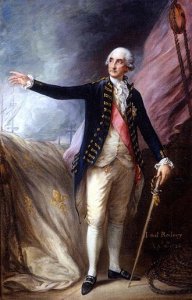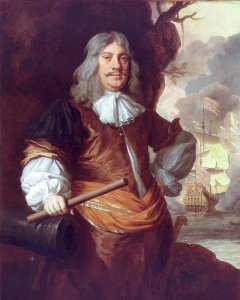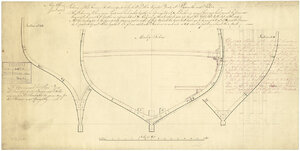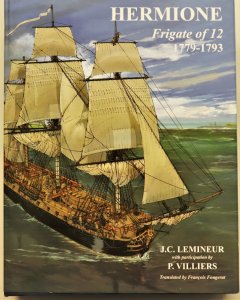Today in Naval History - Naval / Maritime Events in History
20th of May
please use the following link and you will find the details and all events of this day .....
1497 – John Cabot sets sail from Bristol, England, on his ship Matthew looking for a route to the west (other documents give a May 2 date).
1498 – Portuguese explorer Vasco da Gama discovers the sea route to India when he arrives at Kozhikode (previously known as Calicut), India.
1506 – Death of Christopher Columbus (before 31 October 1451 – 20 May 1506) was an Italian explorer, navigator, and colonist who completed four voyages across the Atlantic Ocean under the auspices of the Catholic Monarchs of Spain.
Christopher Columbus (/kəˈlʌmbəs/; before 31 October 1451 – 20 May 1506) was an Italian explorer, navigator, and colonist who completed four voyages across the Atlantic Ocean under the auspices of the Catholic Monarchs of Spain. He led the first European expeditions to the Caribbean, Central America, and South America, initiating the permanent European colonization of the Americas. Columbus discovered the viable sailing route to the Americas, a continent that was then unknown to the Old World. While what he thought he had discovered was a route to the Far East, he is credited with the opening of the Americas for conquest and settlement by Europeans.


The voyages of Christopher Columbus
1570 - Abraham Ortelius published Theatrum Orbis Terrarum, the "first modern atlas"
Theatrum Orbis Terrarum (Latin: [tʰɛˈaːtrʊm ˈɔrbɪs tɛˈrːaːrʊm], "Theatre of the World") is considered to be the first true modern atlas. Written by Abraham Ortelius, strongly encouraged by Gillis Hooftman and originally printed on May 20, 1570, in Antwerp, it consisted of a collection of uniform map sheets and sustaining text bound to form a book for which copper printing plates were specifically engraved. The Ortelius atlas is sometimes referred to as the summary of sixteenth-century cartography. The publication of the Theatrum Orbis Terrarum (1570) is often considered as the official beginning of the Golden Age of Netherlandish cartography (approximately 1570s–1670s).

1756 - Battle of Minorca
was a naval battle between French and British fleets. It was the opening sea battle of the Seven Years' War in the European theatre. French under la Galissonnière defeat British under John Byng
The Battle of Minorca (20 May 1756) was a naval battle between French and British fleets. It was the opening sea battle of the Seven Years' War in the European theatre. Shortly after the war began British and French squadrons met off the Mediterranean island of Minorca. The French won the battle. The subsequent decision by the British to withdraw to Gibraltar handed France a strategic victory and led directly to the Fall of Minorca.
The British failure to save Minorca led to the controversial court-martial and execution of the British commander, Admiral John Byng, for "failure to do his utmost" to relieve the siege of the British garrison on Minorca.

1795 – Launch of French Incorruptible, a Romaine-class frigate of the French Navy

1797 - HMS Oiseau (36), Cptn. Charles Brisbane, engaged one of two Spanish frigate off the mouth of the Rio de la Plata.

1798 – Ending of the Operations against Ostend, 14th May 1798 - 20th May 1798
1799 – Launch of the third USS Boston, a 32-gun wooden-hulled, three-masted frigate of the United States Navy
The third USS Boston was a 32-gun wooden-hulled, three-masted frigate of the United States Navy. Boston was built by public subscription in Boston under the Act of 30 June 1798. Boston was active during the Quasi-War with France and the First Barbary War. On 12 October 1800, Boston engaged and captured the French corvette Berceau. Boston was laid up in 1802, and considered not worth repairing at the outbreak of the War of 1812. She was burned at the Washington Naval Yard on 24 August 1814 to prevent her capture by British forces.

1800 - HMS Cormorant Sloop (24), Cptn. Hon. Courtenay Boyle, wrecked on a shoal near Rosetta, coast of Egypt.
Etna was a French naval Etna-class ship-sloop launched in 1795 that the Royal Navy captured in November 1796. She was taken into service as HMS Aetna and renamed to HMS Cormorant the next year. She captured several merchant vessels and privateers before she was wrecked in 1800 off the coast of Egypt.

Scale: 1:48. Plan showing the body plan, sheer lines with inboard detail and figurehead, and longitudinal half-breadth for Cormorant (captured 1796)
1810 – Launch of French frigate Iphigénie, a Pallas-class frigate of a nominal 44 guns
1811 - Battle of Tamatave
HMS Astrea (36), HMS Phoebe (36), HMS Galatea (36) and HMS Racehorse (18) engaged 3 large French frigates, full of troops off Foul Point, Madagascar.
Renommee surrendered, but Clorinde and Nereide escaped.
The Battle of Tamatave (sometimes called the Battle of Madagascar or the Action of 20 May 1811) was fought off Tamatave in Madagascar between British and French frigate squadrons during the Napoleonic Wars. The action was the final engagement of the Mauritius campaign of 1809–1811, and it saw the destruction of the last French attempt to reinforce their garrison on Mauritius. Although the news had not reached Europe by February 1811 when the reinforcement squadron left Brest, Mauritius had been captured in December 1810 by a British invasion fleet, the French defences hampered by the lack of the supplies and troops carried aboard the frigate squadron under the command of Commodore François Roquebert in Renommée. Roquebert's heavily laden ships reached Mauritius on 6 May and discovered that the island was in British hands the following day, narrowly escaping a trap laid by a squadron of British frigates ordered to hunt and destroy them.


1813 - HMS Algerine Schooner (10), Lt. Daniel Carpenter, wrecked Galapagos Roads, West Indies.
1815 - Commodore Stephen Decatur sails with his flagship USS Guerriere and a squadron of nine ships for the Mediterranean to suppress piracy. Under strict negotiations, Decatur is able to secure a treaty with the Day of Algiers, His Highness Omar Bashaw, on July 3.
1822 - Charles Mills, launched at Chester in 1810 and made two voyages for the British East India Company (EIC) was foundered on 20 May 1822 with the loss of most of the people on board.
1844 - USS Constitution sails from New York on round the world cruise

Constitution c. 1803–04
1856 – Launch of HMS Alert, a 17-gun wooden screw sloop of the Cruizer class of the Royal Navy, launched in 1856 and broken up in 1894.
MS Alert was a 17-gun wooden screw sloop of the Cruizer class of the Royal Navy, launched in 1856 and broken up in 1894. She was the eleventh ship of the Royal Navy to bear the name (or a variant of it), and was noted for her Arctic exploration work; in 1876 she reached a record latitude of 82° North. Alert briefly served with the US Navy, and ended her career with the Canadian Marine Service as a lighthouse tender and buoy ship.

1865 - City of Dunedin – The side wheel paddle steamer wrecked in Cook Strait near Cape Terawhiti on 20 May 1865 while sailing from Wellington to Hokitika via Nelson, New Zealand with the loss of all on board.
1905 – Launch of HMS Africa, a pre-dreadnought battleship of the Royal Navy, and the penultimate ship of the King Edward VII class.
HMS Africa was a pre-dreadnought battleship of the Royal Navy, and the penultimate ship of the King Edward VII class. The ship was built by Chatham Dockyard between 1904 and 1906. Armed with a battery of four 12-inch (305 mm) and four 9.2 in (234 mm) guns, she and her sister ships marked a significant advance in offensive power compared to earlier British battleship designs that did not carry the 9.2 in guns. Like all ships of the class (apart from HMS King Edward VII), she was named after an important part of the British Empire, namely Africa.

1909 - USS Mississippi (BB 23) arrives at Natchez, Miss., and becomes the first U.S. Navy battleship to visit an inland city.
USS Mississippi was the lead ship of the Mississippi class originally built by the US Navy in 1904–1908. The class was built to a design smaller than other American battleships as the result of a limit on displacement imposed by Congress as part of an effort to constrain costs. The ships were armed with a main battery of four 12 in (305 mm), the standard for pre-dreadnought battleships of the time, but to secure that heavy primary armament, significant compromises in speed, secondary batteries, and armor protection were necessary to keep the ship within the prescribed displacement limit.

1943 – Launch of HMS Nairana (/naɪˈrɑːnə/), the lead ship of the Royal Navy's Nairana-class escort carriers that saw service in the Second World War
HMS Nairana (/naɪˈrɑːnə/) was the lead ship of the Royal Navy's Nairana-class escort carriers that saw service in the Second World War. She was built at John Brown & Company shipyards in Clydebank, Scotland. When construction started in 1941 she was intended as a merchant ship, but was completed and launched as an escort carrier, entering service at the end of 1943.
Nairana operated escorting convoys and doing anti-submarine work in the Atlantic and Arctic theatres. On 26 May 1944, Royal Navy Sea Hurricanes operating from Nairana claimed the destruction of three Junkers Ju 290s during the defence of a convoy. This represented 10 percent of the total German inventory of the type. She survived the war, and in 1946 was transferred to the Dutch Navy as the Karel Doorman (QH1), the first Dutch aircraft carrier. In 1948, she was replaced in the Dutch Navy by another vessel of the same name. Nairana was returned to the Royal Navy, and sold to the Port Line company, becoming the merchant ship Port Victor.

20th of May
please use the following link and you will find the details and all events of this day .....
Naval/Maritime History - 27th of August - Today in Naval History - Naval / Maritime Events in History
Today in Naval History - Naval / Maritime Events in History 19 May 1652 - The naval Battle of Goodwin Sands (also known as the Battle of Dover), fought on 19 May 1652 (29 May 1652 Gregorian calendar), was the first engagement of the First Anglo-Dutch War between the navies of the Commonwealth of...
shipsofscale.com
1497 – John Cabot sets sail from Bristol, England, on his ship Matthew looking for a route to the west (other documents give a May 2 date).
1498 – Portuguese explorer Vasco da Gama discovers the sea route to India when he arrives at Kozhikode (previously known as Calicut), India.
1506 – Death of Christopher Columbus (before 31 October 1451 – 20 May 1506) was an Italian explorer, navigator, and colonist who completed four voyages across the Atlantic Ocean under the auspices of the Catholic Monarchs of Spain.
Christopher Columbus (/kəˈlʌmbəs/; before 31 October 1451 – 20 May 1506) was an Italian explorer, navigator, and colonist who completed four voyages across the Atlantic Ocean under the auspices of the Catholic Monarchs of Spain. He led the first European expeditions to the Caribbean, Central America, and South America, initiating the permanent European colonization of the Americas. Columbus discovered the viable sailing route to the Americas, a continent that was then unknown to the Old World. While what he thought he had discovered was a route to the Far East, he is credited with the opening of the Americas for conquest and settlement by Europeans.

The voyages of Christopher Columbus
1570 - Abraham Ortelius published Theatrum Orbis Terrarum, the "first modern atlas"
Theatrum Orbis Terrarum (Latin: [tʰɛˈaːtrʊm ˈɔrbɪs tɛˈrːaːrʊm], "Theatre of the World") is considered to be the first true modern atlas. Written by Abraham Ortelius, strongly encouraged by Gillis Hooftman and originally printed on May 20, 1570, in Antwerp, it consisted of a collection of uniform map sheets and sustaining text bound to form a book for which copper printing plates were specifically engraved. The Ortelius atlas is sometimes referred to as the summary of sixteenth-century cartography. The publication of the Theatrum Orbis Terrarum (1570) is often considered as the official beginning of the Golden Age of Netherlandish cartography (approximately 1570s–1670s).
1756 - Battle of Minorca
was a naval battle between French and British fleets. It was the opening sea battle of the Seven Years' War in the European theatre. French under la Galissonnière defeat British under John Byng
The Battle of Minorca (20 May 1756) was a naval battle between French and British fleets. It was the opening sea battle of the Seven Years' War in the European theatre. Shortly after the war began British and French squadrons met off the Mediterranean island of Minorca. The French won the battle. The subsequent decision by the British to withdraw to Gibraltar handed France a strategic victory and led directly to the Fall of Minorca.
The British failure to save Minorca led to the controversial court-martial and execution of the British commander, Admiral John Byng, for "failure to do his utmost" to relieve the siege of the British garrison on Minorca.
1795 – Launch of French Incorruptible, a Romaine-class frigate of the French Navy
1797 - HMS Oiseau (36), Cptn. Charles Brisbane, engaged one of two Spanish frigate off the mouth of the Rio de la Plata.
1798 – Ending of the Operations against Ostend, 14th May 1798 - 20th May 1798
1799 – Launch of the third USS Boston, a 32-gun wooden-hulled, three-masted frigate of the United States Navy
The third USS Boston was a 32-gun wooden-hulled, three-masted frigate of the United States Navy. Boston was built by public subscription in Boston under the Act of 30 June 1798. Boston was active during the Quasi-War with France and the First Barbary War. On 12 October 1800, Boston engaged and captured the French corvette Berceau. Boston was laid up in 1802, and considered not worth repairing at the outbreak of the War of 1812. She was burned at the Washington Naval Yard on 24 August 1814 to prevent her capture by British forces.
1800 - HMS Cormorant Sloop (24), Cptn. Hon. Courtenay Boyle, wrecked on a shoal near Rosetta, coast of Egypt.
Etna was a French naval Etna-class ship-sloop launched in 1795 that the Royal Navy captured in November 1796. She was taken into service as HMS Aetna and renamed to HMS Cormorant the next year. She captured several merchant vessels and privateers before she was wrecked in 1800 off the coast of Egypt.
Scale: 1:48. Plan showing the body plan, sheer lines with inboard detail and figurehead, and longitudinal half-breadth for Cormorant (captured 1796)
1810 – Launch of French frigate Iphigénie, a Pallas-class frigate of a nominal 44 guns
1811 - Battle of Tamatave
HMS Astrea (36), HMS Phoebe (36), HMS Galatea (36) and HMS Racehorse (18) engaged 3 large French frigates, full of troops off Foul Point, Madagascar.
Renommee surrendered, but Clorinde and Nereide escaped.
The Battle of Tamatave (sometimes called the Battle of Madagascar or the Action of 20 May 1811) was fought off Tamatave in Madagascar between British and French frigate squadrons during the Napoleonic Wars. The action was the final engagement of the Mauritius campaign of 1809–1811, and it saw the destruction of the last French attempt to reinforce their garrison on Mauritius. Although the news had not reached Europe by February 1811 when the reinforcement squadron left Brest, Mauritius had been captured in December 1810 by a British invasion fleet, the French defences hampered by the lack of the supplies and troops carried aboard the frigate squadron under the command of Commodore François Roquebert in Renommée. Roquebert's heavily laden ships reached Mauritius on 6 May and discovered that the island was in British hands the following day, narrowly escaping a trap laid by a squadron of British frigates ordered to hunt and destroy them.
1813 - HMS Algerine Schooner (10), Lt. Daniel Carpenter, wrecked Galapagos Roads, West Indies.
1815 - Commodore Stephen Decatur sails with his flagship USS Guerriere and a squadron of nine ships for the Mediterranean to suppress piracy. Under strict negotiations, Decatur is able to secure a treaty with the Day of Algiers, His Highness Omar Bashaw, on July 3.
1822 - Charles Mills, launched at Chester in 1810 and made two voyages for the British East India Company (EIC) was foundered on 20 May 1822 with the loss of most of the people on board.
1844 - USS Constitution sails from New York on round the world cruise
Constitution c. 1803–04
1856 – Launch of HMS Alert, a 17-gun wooden screw sloop of the Cruizer class of the Royal Navy, launched in 1856 and broken up in 1894.
MS Alert was a 17-gun wooden screw sloop of the Cruizer class of the Royal Navy, launched in 1856 and broken up in 1894. She was the eleventh ship of the Royal Navy to bear the name (or a variant of it), and was noted for her Arctic exploration work; in 1876 she reached a record latitude of 82° North. Alert briefly served with the US Navy, and ended her career with the Canadian Marine Service as a lighthouse tender and buoy ship.
1865 - City of Dunedin – The side wheel paddle steamer wrecked in Cook Strait near Cape Terawhiti on 20 May 1865 while sailing from Wellington to Hokitika via Nelson, New Zealand with the loss of all on board.
1905 – Launch of HMS Africa, a pre-dreadnought battleship of the Royal Navy, and the penultimate ship of the King Edward VII class.
HMS Africa was a pre-dreadnought battleship of the Royal Navy, and the penultimate ship of the King Edward VII class. The ship was built by Chatham Dockyard between 1904 and 1906. Armed with a battery of four 12-inch (305 mm) and four 9.2 in (234 mm) guns, she and her sister ships marked a significant advance in offensive power compared to earlier British battleship designs that did not carry the 9.2 in guns. Like all ships of the class (apart from HMS King Edward VII), she was named after an important part of the British Empire, namely Africa.
1909 - USS Mississippi (BB 23) arrives at Natchez, Miss., and becomes the first U.S. Navy battleship to visit an inland city.
USS Mississippi was the lead ship of the Mississippi class originally built by the US Navy in 1904–1908. The class was built to a design smaller than other American battleships as the result of a limit on displacement imposed by Congress as part of an effort to constrain costs. The ships were armed with a main battery of four 12 in (305 mm), the standard for pre-dreadnought battleships of the time, but to secure that heavy primary armament, significant compromises in speed, secondary batteries, and armor protection were necessary to keep the ship within the prescribed displacement limit.
1943 – Launch of HMS Nairana (/naɪˈrɑːnə/), the lead ship of the Royal Navy's Nairana-class escort carriers that saw service in the Second World War
HMS Nairana (/naɪˈrɑːnə/) was the lead ship of the Royal Navy's Nairana-class escort carriers that saw service in the Second World War. She was built at John Brown & Company shipyards in Clydebank, Scotland. When construction started in 1941 she was intended as a merchant ship, but was completed and launched as an escort carrier, entering service at the end of 1943.
Nairana operated escorting convoys and doing anti-submarine work in the Atlantic and Arctic theatres. On 26 May 1944, Royal Navy Sea Hurricanes operating from Nairana claimed the destruction of three Junkers Ju 290s during the defence of a convoy. This represented 10 percent of the total German inventory of the type. She survived the war, and in 1946 was transferred to the Dutch Navy as the Karel Doorman (QH1), the first Dutch aircraft carrier. In 1948, she was replaced in the Dutch Navy by another vessel of the same name. Nairana was returned to the Royal Navy, and sold to the Port Line company, becoming the merchant ship Port Victor.




 of San José during
of San José during 




